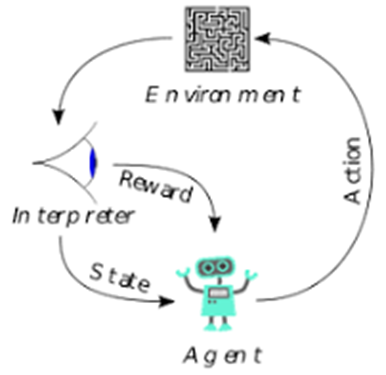What is Machine learning?
The
meaning of Machin Learning is machine learns itself with its
experience. Machine learning
(ML) is a type of artificial intelligence (AI) that allows software
applications to become more accurate at predicting outcomes without being
explicitly programmed to do so. ML improve the performance of a computer
program using sample data or past experience.
We have to create a model and then we have to train the model which will
provide the prediction on the basis of machine learning algorithms.
For eg: A robot learns with its past experience and
improve itself.
Classification of Machine Learnings algorithms:
Supervised Learning:
Supervised
learning, as the name indicates, has the presence of a supervisor as a
teacher.
It is defined by its use of labelled
datasets to train algorithms that to classify data or predict outcomes
accurately.
For eg: Supposed to identify the fruits in the basket
we must have prior knowledge about the fruit's colour, shape and size of
the fruit.
There
are some important supervised learning algorithm:
·
Regression
·
Logistic
Regression
·
Classification
·
Naive Bayes
Classifiers
·
K-NN (k nearest
neighbors)
·
Decision Trees
·
Support Vector
Machine
Advantages:-
·
Supervised
learning allows collecting data and produces data output from previous
experiences.
·
Helps to optimize
performance criteria with the help of experience.
·
Supervised
machine learning helps to solve various types of real-world computation
problems.
Disadvantages:-
·
Classifying big
data can be challenging.
·
Training for
supervised learning needs a lot of computation time. So, it requires a lot of
time.
Unsupervised
Learning:
It uses machine learning algorithms to analyse and cluster unlabelled
datasets. These algorithms discover hidden patterns or data groupings without
the need for human intervention.
Instead, it allows the model to
work on its own to discover patterns and information that was previously
undetected. It mainly deals with the unlabelled data.
Unsupervised learning algorithms
include clustering, anomaly detection, neural networks, etc.
it resembles
the methods humans use to figure out that certain objects or events are from
the same class, such as by observing the degree of similarity between objects.
Some recommendation systems that you find on the web in the form of marketing
automation are based on this type of learning.
For eg: Suppose there are some animals like
Cats and Dogs. There is a new born baby who have no idea about which animal is
dog or cat. On the basis of pattern and similarities he can categorize these
features of Dog and these features of cat.
Unsupervised learning is classified into two
categories of algorithms:
1. Clustering 2. Association
Unsupervised
Learning Algorithms:-
1. Hierarchical clustering
2. K-means clustering
3. Principal Component Analysis
4. Singular Value Decomposition
5. Independent Component Analysis
Reinforcement
learning:
Reinforcement learning is a machine learning training method based on
rewarding desired behaviors and/or punishing undesired ones. In general,
a reinforcement learning agent is able to perceive and interpret its
environment, take actions and learn through trial and error. In the absence of a training
dataset, it is bound to learn from its experience.
Reinforcement Learning is a part
of the deep learning method that helps you to maximize some portion of the
cumulative reward.
Q-Learning is a reinforcement
machine learning algorithm.
For eg: in
chess game, a best possible move is considered.


Comments
Post a Comment